
Can't Quit Camila
Story by Tobias Hess / Photography by James Bee / Styling by Angelina Cantú / Makeup by Patrick Ta / Hair by Jesus Guerrero / Nails by Juan Alvear

Camila Cabello is rebranding, but I’m sure you’ve already noticed.
The world has come to know Cabello as one thing: an eminently capable pop star who can craft ubiquitous hits without ruffling too many feathers. But with just a few cryptic Instagram posts and one album preview, it's become clear the days of simplicity are over. A new look — edgier, blonder, more lo-fi, yet hyper-femme — and a new sound — bolder, more chaotic, digitized and frenzied — has set off legions of skeptics and gawkers that are sure this is all some craven attempt to corner the “it girl” market. According to the politics of extremely online pop stans, the Cuban-born Miami-raised artist is triangulating her image in order to snatch some niche, SoundCloud-coded crown.
“There are some comments I see that are like, ‘She so wants to be that girl. She will never be that girl.’ And I'm like, I don't want to be that girl. I don't even know what that means,” Cabello relents over Zoom a few weeks before the release of her new single, “I Luv It.”
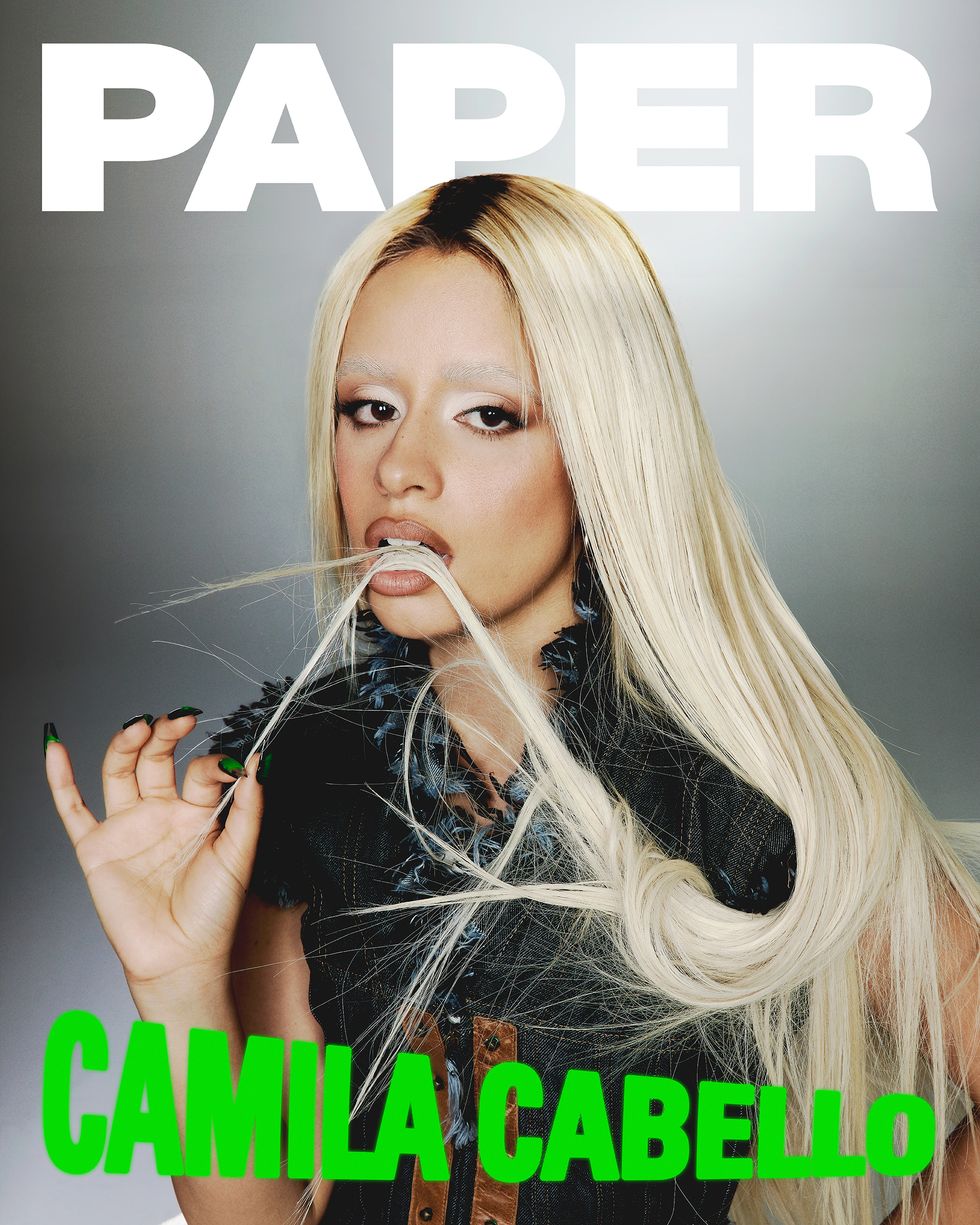
Vest: Archive Alexander McQueen (Courtesy of Artifact New York), Dress: Shushu/tong, Earrings: Jennifer Fisher Jewelry, Shoes: Vintage
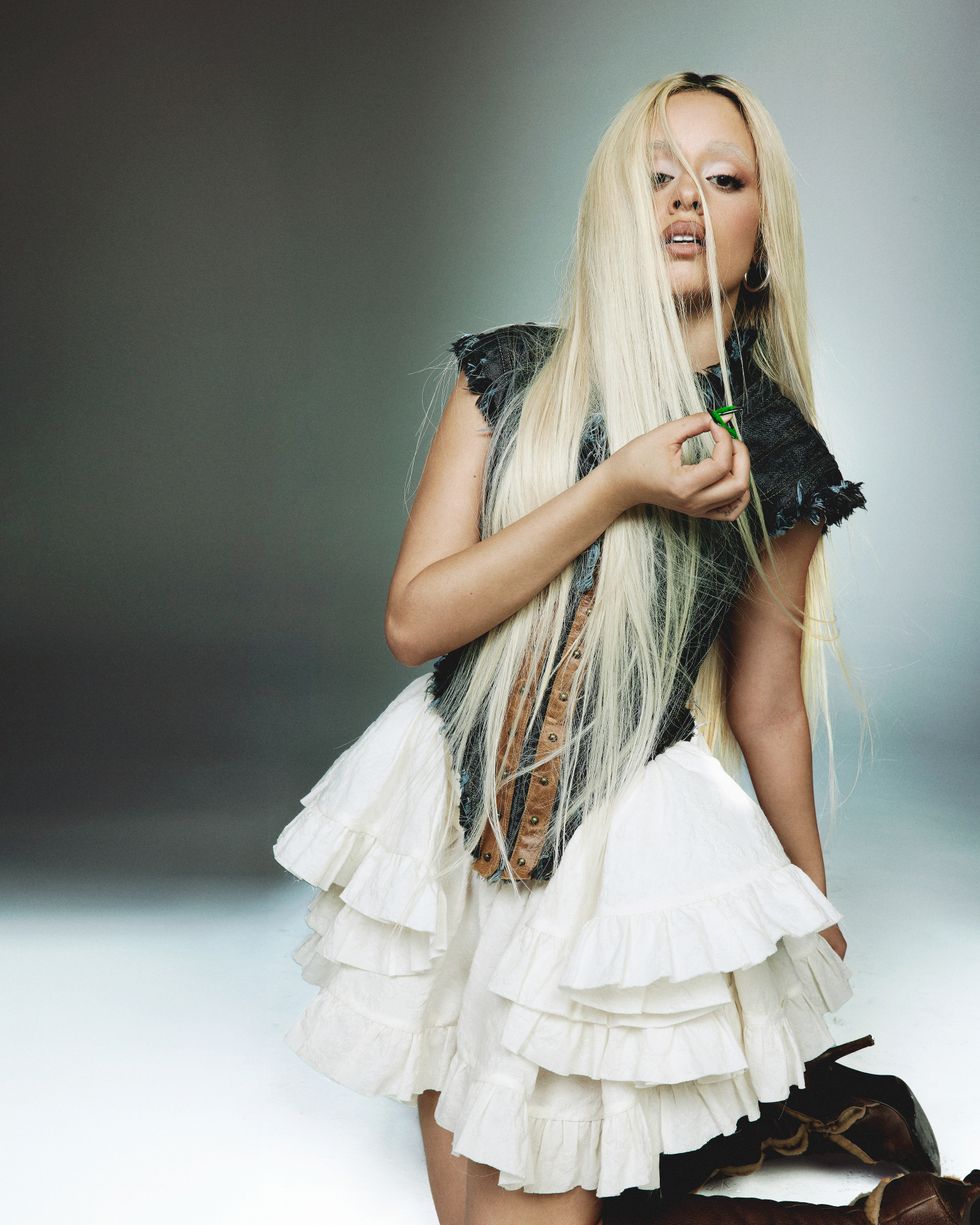
Vest: Archive Alexander McQueen (Courtesy of Artifact New York), Dress: Shushu/tong, Earrings: Jennifer Fisher Jewelry, Shoes: Vintage
While speaking, she reclines languidly in her bed against a wall of pillows adorned with silver Cs. Her newly platinum bangs partially cover her doe-eyed gaze. “Culture goes up and down. You're that girl one day and then you're trash the next day, so I don't really care about that,” she says. “There is no master plan.”
Cabello is one of her generation’s most successful pop stars, with hits like “Havana” and the Shawn Mendes-collab-cut “Señorita” each garnering more than 2 billion streams on Spotify. With music that spans continents and genres and an agile falsetto, Cabello has carved a comfortable corner within the very upper echelons of the pop stratosphere. She has never necessarily been, though, an outside-the-box risk taker.
Prior to her forthcoming record, Cabello’s music has largely worked as a synthesis of pop in all of its useful glory: glimmering things that worked just right. Though her 2022 record, Familia, utilized a sonic palette from her native Cuba and at times dabbled with synthier, more eclectic sounds, Cabello’s public perception as a relatively true-to-form Top 40 regular has remained largely unchanged since she came on the scene 12 years ago, first as a contestant on The X Factor and then as one-fifth of the girl group Fifth Harmony.
“Culture goes up and down. You're that girl one day and then you're trash the next day.”
Cabello will tell you, however, that she was never necessarily that girl, that pop-perfect princess. “I hated [in the past] when I made stuff or put out stuff that felt like it wasn’t weird enough,” she says. “[I would say to myself], ‘God, it’s a good song, but I don't know if this feels true to me.’ That's always when I struggle.”
This sentiment might be surprising. With “Havana,” for example, Cabello assembled a team of nine fellow co-writers to hone a song that is among the most successful of the streaming era. The industry model — that is, one that involves great legions of writers, producers and general collaborators — has served her well on paper. But for this album, she was sure that she wanted to try something different.
“[Before making this album], the last thing I had done was a remix of a Stromae song, where I hopped in the booth and wrote something on my own. I really like how that process made me feel and I loved the results of it,” she says, referring to her remix of Belgian star Stromae’s song “Mon Amour.” That experience pushed Cabello to strip down her entire creative process, eventually guiding her to Pablo “El Guincho” Díaz-Reixa, the sonic mastermind behind both of Rosalía’s albums, El Mal Querer and the futuristic MOTOMAMI. “An amazing producer encourages you to bring out more of you instead of diluting yourself. [El Guincho] really helped me believe in myself in that way,” Cabello remembers. Many of the beats she ended up liking had been created in collaboration with Jasper Harris, the 25-year-old wunderkind behind some of the biggest hits by Tate McCrae, Jack Harlow and Baby Keem. “The three of us really locked in.”
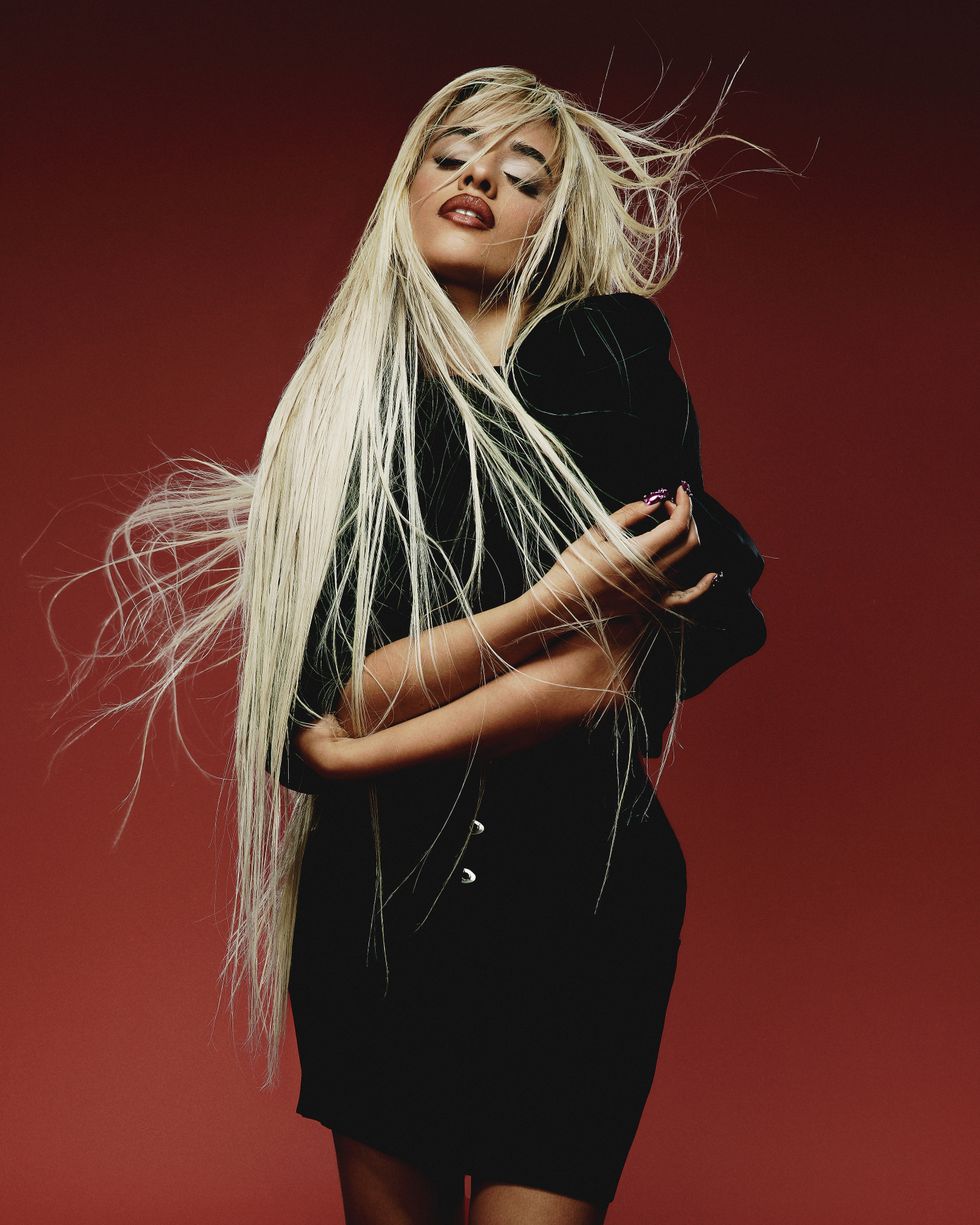
Dress: Stella McCartney, Corset: Stylist's own, Earrings: Lady Grey Jewelry
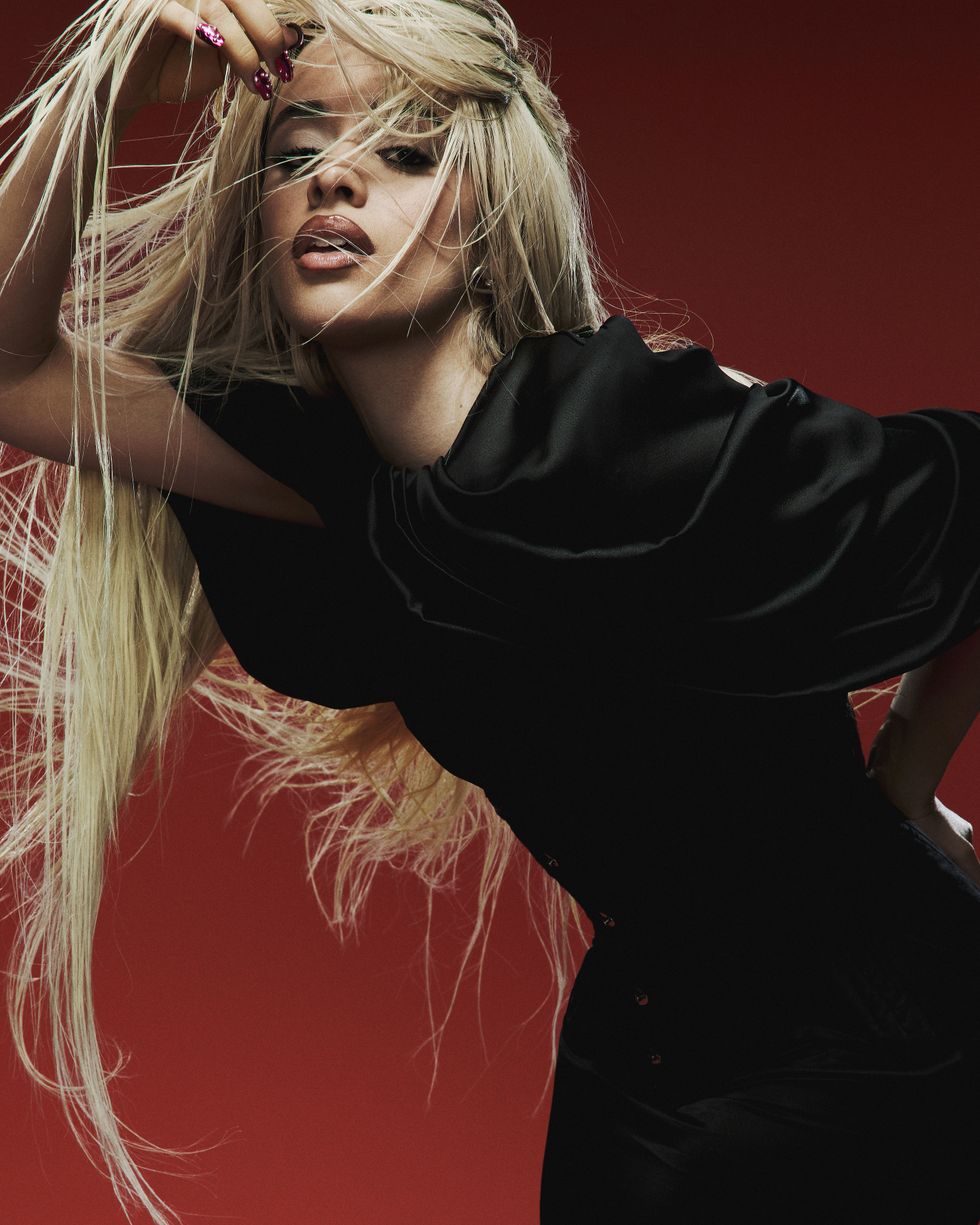
Dress: Stella McCartney, Corset: Stylist's own, Earrings: Lady Grey Jewelry
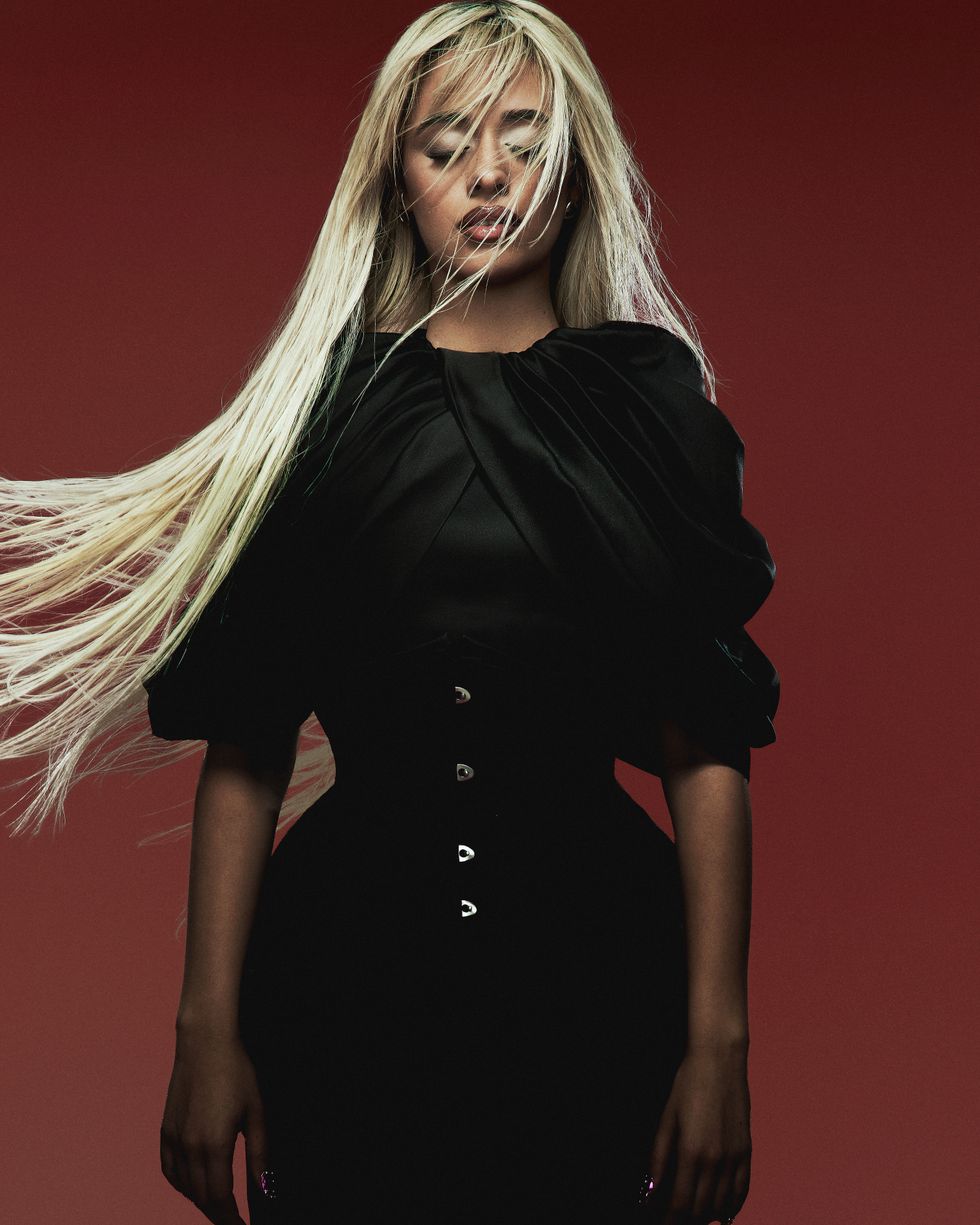
Dress: Stella McCartney, Corset: Stylist's own, Earrings: Lady Grey Jewelry
Cabello, El Guincho and Harris largely removed themselves from any outside input, trading the familiar terrain of Los Angeles for Cabello’s hometown of Miami to record her album. They toyed with using a few outside writers, but eventually decided that the three of them would spearhead the project alone. And, crucially, they explored a range of sonic references, eventually settling on a moodboard that included the playful gravitas of female MCs like Flo Milli, the austere melancholia of Lana Del Rey and the orchestral grit of Ye’s My Beautiful Dark Twisted Fantasy. All of these references blend and meld towards something distinct, but it's the cadence of contemporary rap music that is the most noticeable feature of the project.
“We were deeply influenced by rap,” Harris says over the phone. “We wanted to see how we could take these cadences that have a certain swagger and contrast it with beautiful music and pretty chords and lush guitar. We were mixing and matching to find something new and inspiring. If it's a sweet melody, let's make the music scary. If she has a rap flow, let's make the music acoustic.”
“This is the most confident I've been.”
That sense of play and contradiction gave the album its own world and its own sense of fiction. “Six months [into recording], we had a couple songs and [I realized], Oh, this is a character,” Cabello says. “It became a persona that I was tapping into, which was me, but definitely a hyper-femme version of me. [I started to ask:] What are the color palettes of the world this character inhabits? What’s her hair? What’s photography like there?”
The result of this world-building and creative discovery is Cabello’s fourth and boldest solo album, due for release this summer.
The first time I heard the album was in Jasper Harris’ car. Harris has been my dearest friend since childhood, so when I came home to LA for the holidays, he was eager to show me what he’d been working on for the past year in secret.
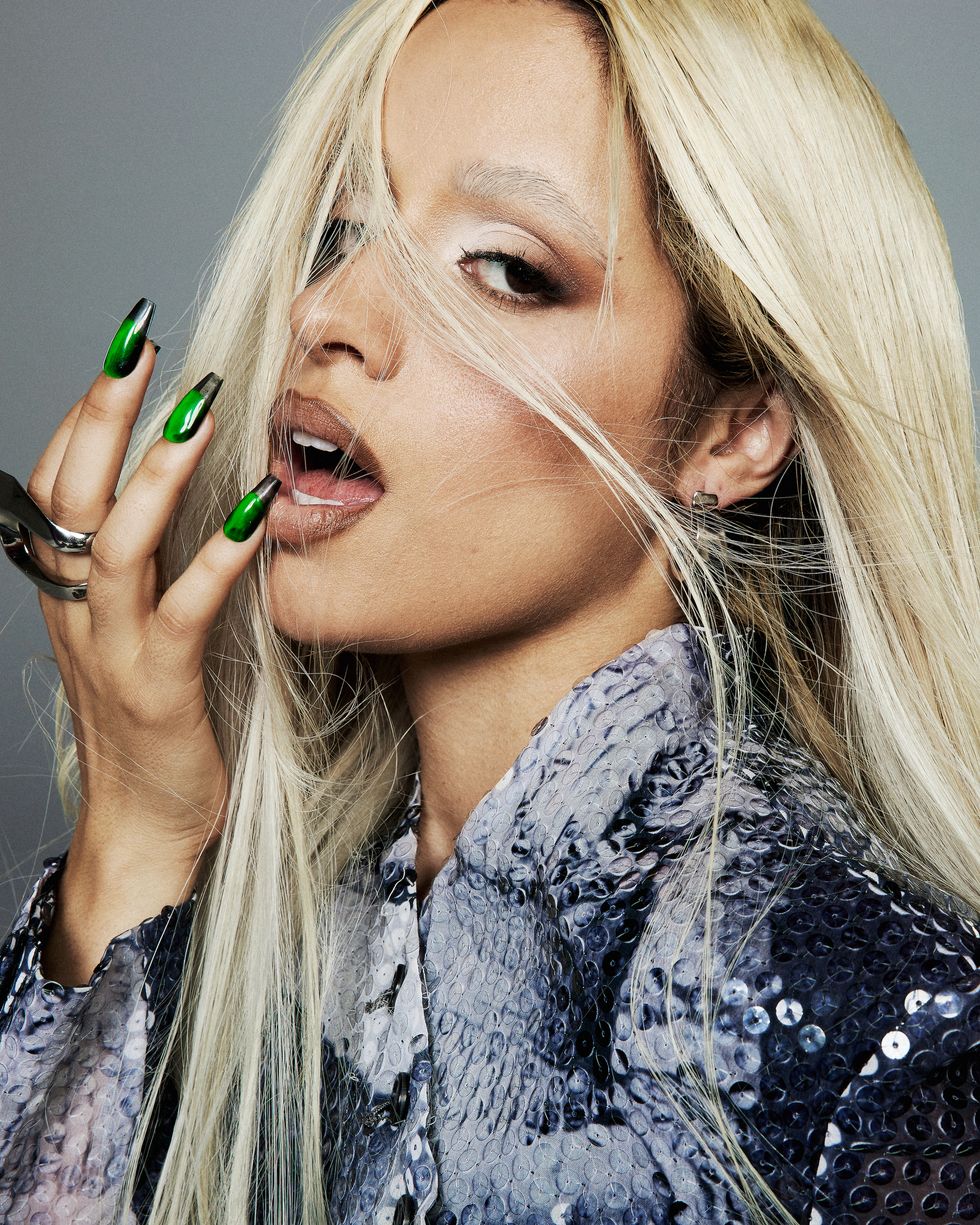
Dress: Archive Alexander McQueen (Courtesy of Artifact New York), Rings: Alexander McQueen, Earrings: Alexis Bittar
Harris works harder than anyone I have ever met, but I sensed within him a weariness over these past few years. There is a certain way pop music is done: a pace to its creation, an often set of narrow demands implied by the business minds behind it. In El Guincho, he found a collaborator who had similarly deep aims, ostensibly free from the more craven impulses of the market. They want to make something true and expansive, to have a creative process that centers play rather than product. When the three of them finally met, it was clear that Cabello shared this ethos, too. “In so many pop rooms, there's this thing like, We must get a song today,” Harris says. “Something that brought us together as people was that none of us cared about that. We had a lot of fun and every idea was entertained. I never felt fully understood musically by people in pop music until I met Camila and Pablo.”
The product of their collective efforts is frankly much stranger and more surprising than anyone is likely prepared for. “I Luv It” is a genuinely chaotic slice of fast and fuzzy digitized pop that whooshes past you like a Miami sports car. The first video that previewed the song featured a newly blonde Cabello singing the chorus, her pointer fingers forming a delicate heart. This snippet drew immediate comparisons to Charli XCX, who is beloved for bringing the high-speed sounds of SOPHIE and A.G. Cook’s PC Music into pop’s sub-mainstream. The lo-fi iPhone aesthetic, the cyborgian sonics and then a video by Charli mimicking Cabello’s while singing her similar-sounding song, “I Got It,” fueled this dialogue. But Cabello reposted Charli’s video, showing it’s all love between them. “I love Charli and I love Charli's music, so I think [comparing us is] a huge compliment,” Cabello says. “Charli loves me, so everybody can fuck off,” she laughs.
“Charli loves me, so everybody can fuck off.”
There’s little doubt, though, that this narrative will fade as more singles come out and as people dig further into “I Luv It.” After listening to the song as a whole, it’s clear that the sonic touchpoint is the cyber haze of internet rap, and thus any digitized chaos is due to that reference rather than any interchange between Cabello and hyperpop peers. “I’m blacking out/ I’m on a spiral/ I need you now and tomorrow,” she sings before repeating the song’s title like a bleary affirmation. After, she taunts out a phrase from Gucci Mane’s seminal hit “Lemonade”: “Lemons on the chain with the V-cuts.” It’s a signal of the sonic collage to come, a loose assemblage of sounds and feelings that form the fabric of the record.
Cabello’s project is heavy on big swings and eye-popping features. When I first heard it in Harris’s car, I was astounded by its energy. Admittedly, I was initially confused, but as it played on, I became entranced by its bold abandon. The production is sparse, mainly relying on thick layers of piano and sharp-edged drums that pound with booming velocity. The writing is both diaristic, bluntly personal, and imagistic, too, offering visual impressions of Miami landscapes rather than always telling a neatly constructed story. And Cabello here sounds playful, often drenched in a robotic autotune that never hides her sprawling range. The album’s mix does not feel necessarily ready-made for the Top 40, though it’s surely set up to zoom past the Top 10.
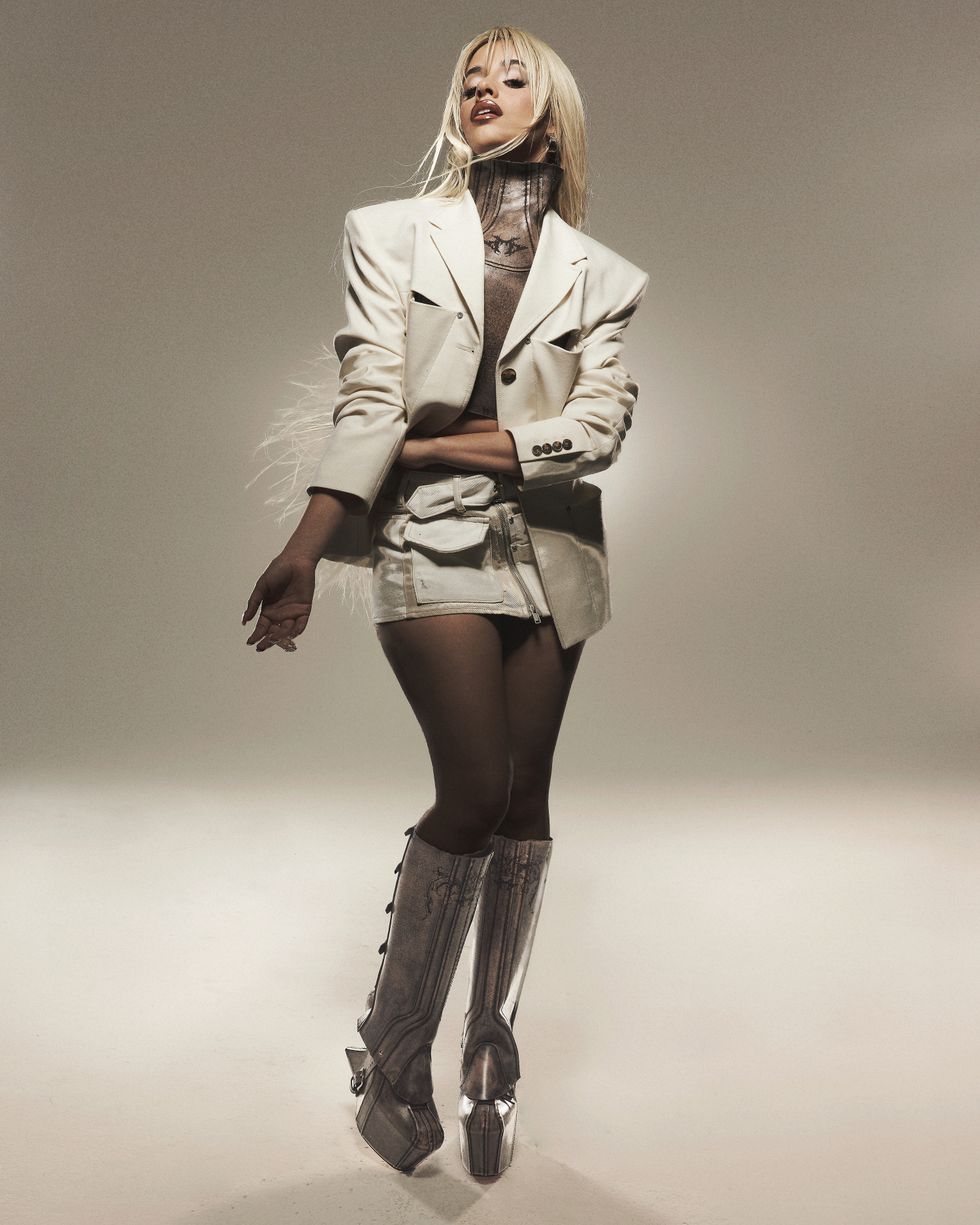
Blazer and skirt: Dion Lee, Breast plate and shoes: Emma Foley, Earrings and ring: Alexis Bittar
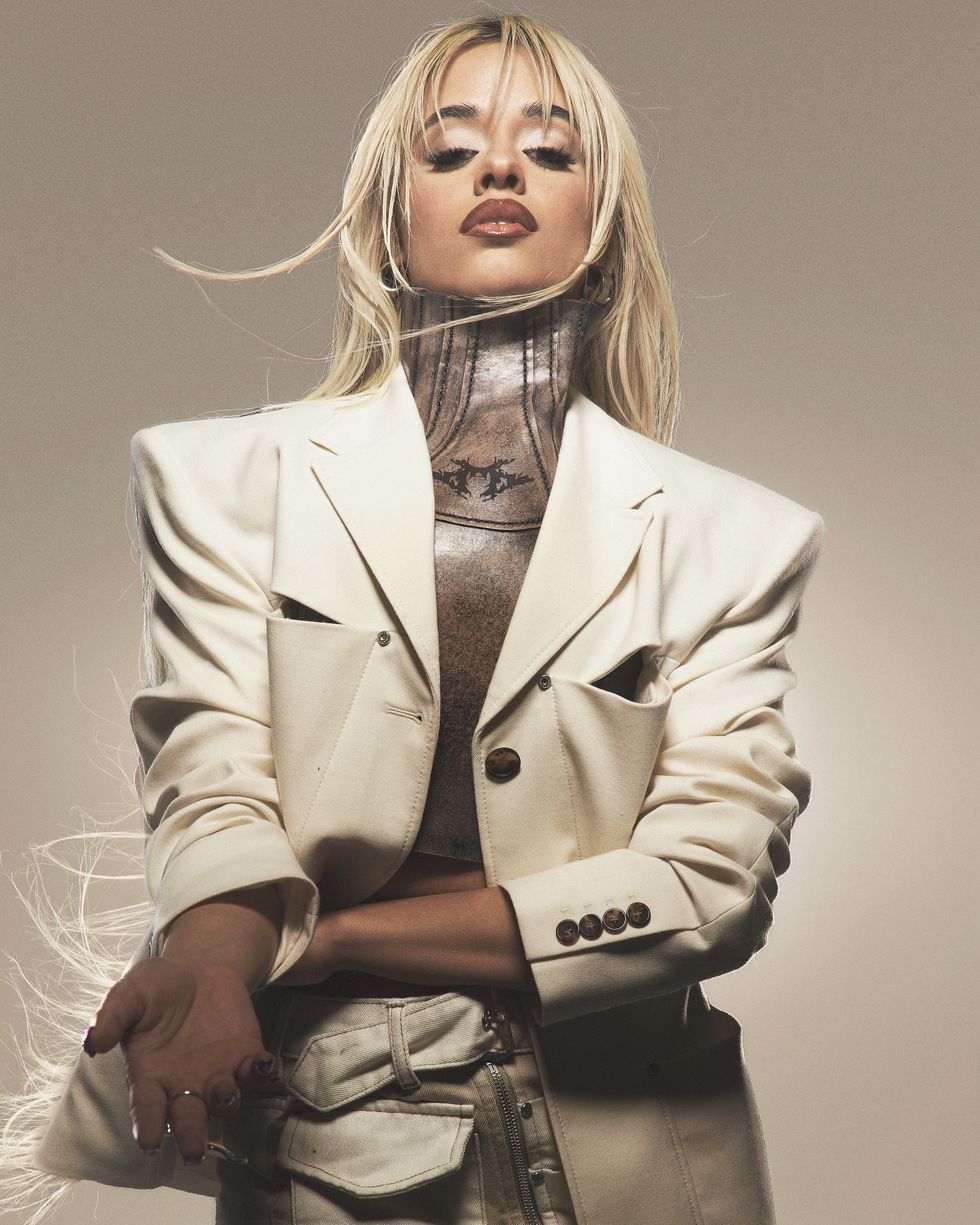
Blazer and skirt: Dion Lee, Breast plate and shoes: Emma Foley, Earrings and ring: Alexis Bittar
“One main point of reference for me was going back to those Car Audio Bass records I used to play when I started DJing in Barcelona,” Díaz-Reixa says over email. “[You hear] them driving around the city when they stop at a traffic light and there’s four different bass patterns coming out of the cars. That’s remained my guiding light for the whole album, especially for sequencing the drums.” Miami’s musical legacy also had a strong presence. “Usually the rhythm section is quite busy [on Miami Records], so synth lines remain minimalistic but have to be very bold; you have to notice them right away when they show up in the song,” he continues. “That was a huge find for me and also why Jasper’s been so important for this album.”
“Miami's a city where you drive with your windows down and hear Afrobeat, and Reggaeton, and Hip Hop and pop. It's such a melting pot of music and of culture,” Cabello says. The album reflects that eclecticism, giving it the energetic thrust of a rapid radio dial turn in South Beach.
After alluding to some of her past work’s relative sonic safety, Cabello explains why she’s rarely sounded as she does here, so unfettered, so liberated. “This is my fourth time doing an album, which is not that many times to do something,” she offers. “This is the most confident I've been. I've learned from all of those times where I've been like, Okay, maybe I listened to that person and I wavered a little bit. I tried to see what didn't feel good. And I didn't do it again.”
“I don't feel like you need to be a perfect angel all the time.”
That includes writing everything herself. The whole project has an emotional immediacy and rawness that may give someone whose private love life has been the subject of sustained scrutiny pause. Maybe the Camila-persona that emerged is a form of protection from the public’s watchful gaze. If people begin poking and prodding, she can always claim it’s fiction. “I don't know if people have that nuance,” she admits in response to the proposition, before alluding to a deeper layer of truth behind this new aesthetic veil. “I love writing about situations where there may be a gray area morally, where I might be the bad guy. I don't feel like you need to be a perfect angel all the time. All of it is worth exploring, because it's human. I find that much more interesting than protecting my image as a celebrity.”
That free-spirit attitude mirrored her own personal ethos during the year she made the record. It’s important to remember that Cabello was swept up in the pop machine at just 15, spending the next many years enmeshed in the demanding obligations of girl group superstardom. “I had so much time to myself in hotel rooms and on tour buses to develop an inner world, but my relationship with the outer world felt immature,” she says. This was her time, then, to reclaim that relationship with the world at large. “[I became an] experience junkie. It was my ‘year of yes,’” she says with a smile. “A huge part of this album was having the time to date and build on the relationships with my friends that weren’t super nourished.”
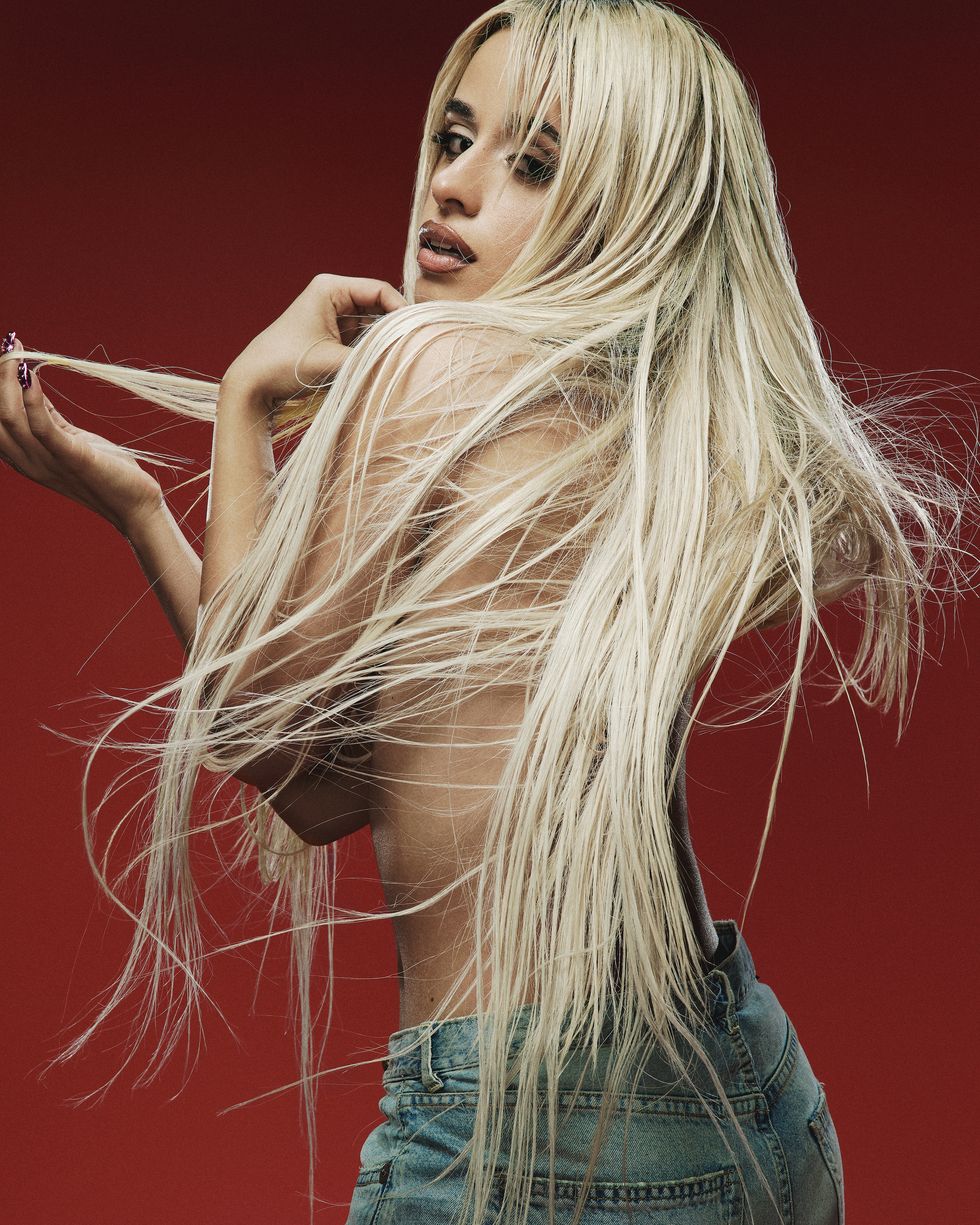
Jeans: R13
“For me because of this weird rootlessness of starting out in Hollywood at a young age, I always feel like, It would feel really good to be claimed by the place that I’m from,” she reflects. “I met Dwayne Wade at the Oscars,” she adds, referring to the basketball star who plays for the Miami Heat. “And I was like, ‘Dwayne Wade, I'm from Miami.’ And he said, ‘I know, I'm so proud of you.’” She makes a quick motion pretending to sob. “It felt so good. We all have this deeply visceral human need to belong.”
But when you’re a pop star, the lines between belonging — as in affinity, care and kinship — can so easily merge towards something more akin to ownership. Your fans claim you. Your hometown does, too, as does the world, though maybe with less loving grace. Your pain is the world’s pain. Your love is the world’s love. Your time is the world’s time. Your life has been subsumed by the spectacle, and every heartbreak, every joy you experience is fodder for us all. How do you create in that environment? How do you love? How do you tell the world who you really are?
Maybe you don’t. Maybe, you roll down the windows and scream something like a mantra. I love it.
Photography: James Bee
Styling: Angelina Cantú
Makeup: Patrick Ta
Hair: Jesus Guerrero
Nails: Juan Alvear
Creative consultant: Lexi Kingery
Photo assistant: Austin Durant
Digitech: Jeremy Aquino
Gaffer: John Mimms
Styling assistants: Coco Emery, Heidi Cannon
Nail assistant: Sayo Ire
Editor-in-chief: Justin Moran
Managing editor: Matt Wille
Editorial producer: Angelina Cantú
Music editor: Erica Campbell
Cover type: Jewel Baek
Story: Tobias Hess